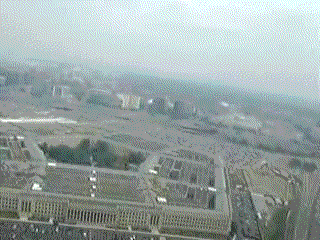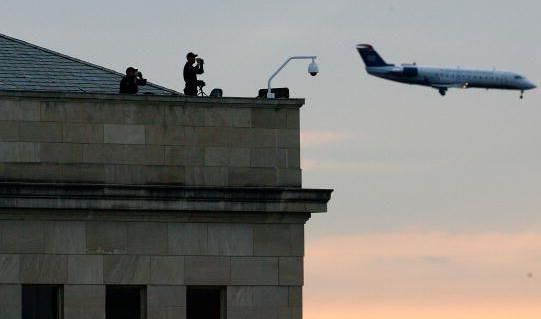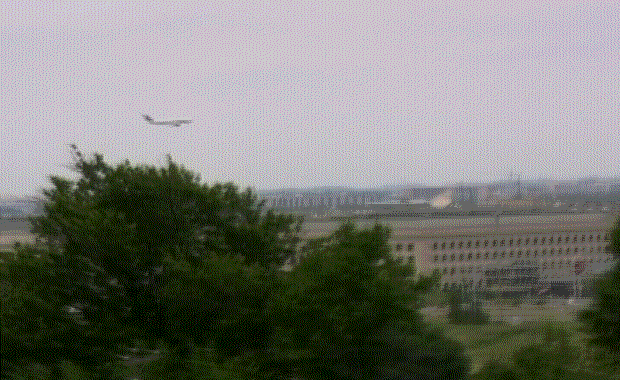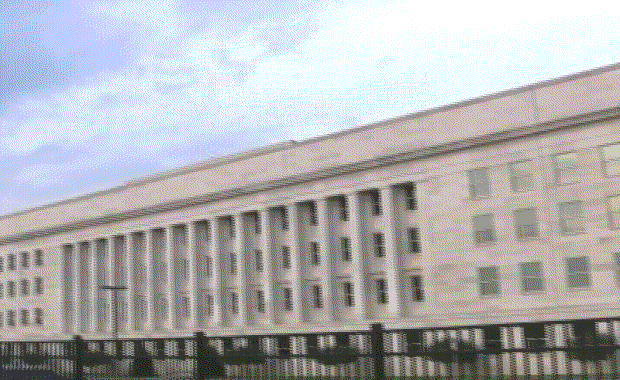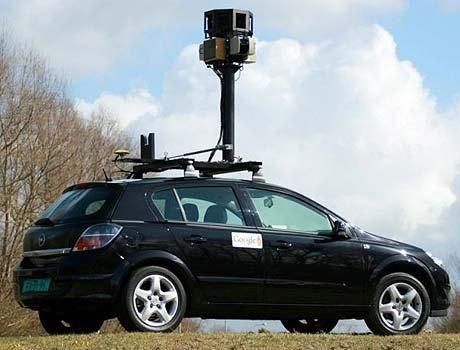Georg Lehle schrieb in seinem Artikel "Die Pentagon- "Überflugtheorie":
Ein Überflug hätte viel Aufsehen erregen müssen: Ein Passagierflugzeug, das im Tiefflug das Verteidigungsministerium bombardiert und wegfliegt...
Wäre ein Über- und Wegflug vom Pentagon nicht ein sehr risikohaftes Unternehmen aus Augen der Verschwörer gewesen? Eine tief-fliegende Passagiermaschine am 11. September um 09:38 über dicht besiedelten Gebiet hätte starkes Aufsehen erregen müssen.
www.911-archiv.net/Tatort-Pentagon/die-p...erflug-theorieq.html
Passagierflugzeuge über dem Pentagon sind nichts besonders, wie Sean Boger berichtet (er arbeitet im Heliport Tower am Pentagon), schließlich befindet sich ein Flughafen in der Nähe:
And [redacted] and I were talking, and I was like, I'm surprised that nobody has ever flown into the Pentagon, and I am not even talking about terrorists. I am just saying that Washington's airport is right on the other side of the Pentagon, and she said that you have been saying that for 3 years... And I am not even saying terrorists. I am just saying about aircraft that makes a mistake and actually flies into the building, because it is so close to the Pentagon... I mean, you can look up every day and you can actually see the landing gear on the aircraft. You can read the numbers on the aircraft and so it is that close. And she said you have been saying that for like 3 years.
Source: NEIT-299, pp. 9-10
www.thepentacon.com/neit299.pdf
Auch im Interview mit CIT wiederholt Boger nochmal, dass Flugzeug im Tiefflug über das Pentagon etwas Alltägliches sind.
www.911-archiv.net/Video/viewvideo/60/ue...an-boger/Page-1.html
Fazit:
Passagierflugzeuge Im Tiefflug über das Pentagongelände waren und sind nichts besonderes, da das sich Pentagon in der Nähe des Reagan International Airport befindet.
Zu Hoffmans Analyse:
Hoffman´s Grafiken geben nicht die eigentliche Sicht auf das Pentagon wieder.
Google- Street- View ist NICHT aus der Sicht von Passanten oder Autofahrern aufgenommen, sondern eingie Meter über dem Boden:
In den Grafiken Hoffmans sind alle Sichthindernisse wie Verkehrsschilder, Bäume, Büsche, Brücken, Überführungen entfernt worden, ein Schelm der Böses dabei denkt:
Hoffman´s Grafik, die Lehle verwendet:
ORIGINAL- "Street- View"
maps.google.com/maps/sv?client=firefox-a...tg&cbp=12,60.56,,1,5
Man vergleiche Hoffmans Grafiken mit der Originalstreetview:
911research.wtc7.net/essays/pentacon/index.html
Hoffmans Grafiken geben die Sicht der Zeugen b] verfälscht [/b] wieder.
Eine realistischere Sicht (aus der Sicht eiens Autofahrers) liefern CIT selbst:
www.911-archiv.net/Video/viewvideo/71/ue...rosstown/Page-1.html
CIt weisen noch auf eine nanderen Punkt bei Hoffmans Artikel hin:
Notice that he is acknowledging that they would be alerted to the event "by the sound", which would take time to travel to them, and that their reaction of turning "to look", or "look[ing] up", would not be instantaneous -- there would be a natural reaction time, which Hoffman sets at "typically.. less than a second".
The speed of sound at sea level on an average day is 741 mph (sources: NASA, Wikipedia). That's 12.35 miles per minute, 0.206 miles per second.
The table below shows the approximate distances from the "explosion's center" to each of Hoffman's vantage points on highways 395 and 110, derived using Google Earth's measuring tool. By dividing the distances by 0.206 miles per second, we get the number of seconds that it would take for the sound to reach them.
Hoffman says that it would take "typically... less than a second" for them to react to the sound, so let's just add 0.5 seconds for reaction time then -- a very fast reaction if you're preoccupied driving a car and watching the road and/or listening to the events at the WTC unfold live on the radio.
]Vantage Distance Time for sound Reaction Time
(appr. 0.5 s)
]395_1 0.61 2.96 seconds 3.46 secondsr]
]395_2 0.40 1.94 seconds 2.44 seconds
395_3 0.34 1.65 seconds 2.15 seconds
395_4 0.28 1.35 seconds 1.85 seconds[
395_5 0.33 1.60 seconds 2.10 seconds
395_6 0.38 1.84 seconds 2.34 seconds
395_7 0.45 2.18 seconds 2.68 seconds
395_8 0.60 2.91 seconds 3.41 seconds
395_9 0.85 4.13 seconds 4.63 seconds
110_3 0.37 1.76 seconds 2.26 seconds
Do you see the problem here?
Hoffman's CGI images show the plane at five points in time:
0.0 seconds
0.2 seconds
0.4 seconds
0.9 seconds
1.8 seconds
This means that ALL of Hoffman's images show the plane during a time period when anyone at any of Hoffman's vantage points on 395 or 110 who was "alerted by the sound" would NOT yet be looking at the Pentagon!
Even for the two vantage points he gives on Route 27 to the north of the Pentagon, the total times (speed of sound + reaction) for locations 27_1 and 27_2 are 2.73 seconds and 1.66 seconds, respectively.
www.citizeninvestigationteam.com/CIT-Res...n-Statement/#hoffman
Nicht zuletzt das Explosionsgeräusch hätte viele Menschen aufmerksam machen müssen. Beispielsweise stammen von einer stark befahrenen Straße (395) heute einige Augenzeugenberichte, die jedoch für einen südlichen Anflug mit Einschlag (Quelle) sprechen. Wenigstens diese Zeugen hätten den Überflug folgendermassen mitverfolgen müssen
Für einen Überflug wäre eine klare Sicht auf den Westflügel VOR der Explosion nötig gewesen, was bei Hoffman´s angegeben Streetviews meist nicht der Fall war. Die Sicht auf den Westflügel war in diesem Fall blockiert.
Viele Zeugen wurden erst durch die Explosion auf das Pentagon aufmerksam, der Überflugjet wäre dann (wie oben dargestellt) als normaler Landeanflug auf Reagan International Airport angesehen worden,
bestenfalls als "zweites Flugzeug", nachdem durch die Medien und Regierung sich die Geschichte des Flugzeugeinschlags durchgesetzt hatte.


















